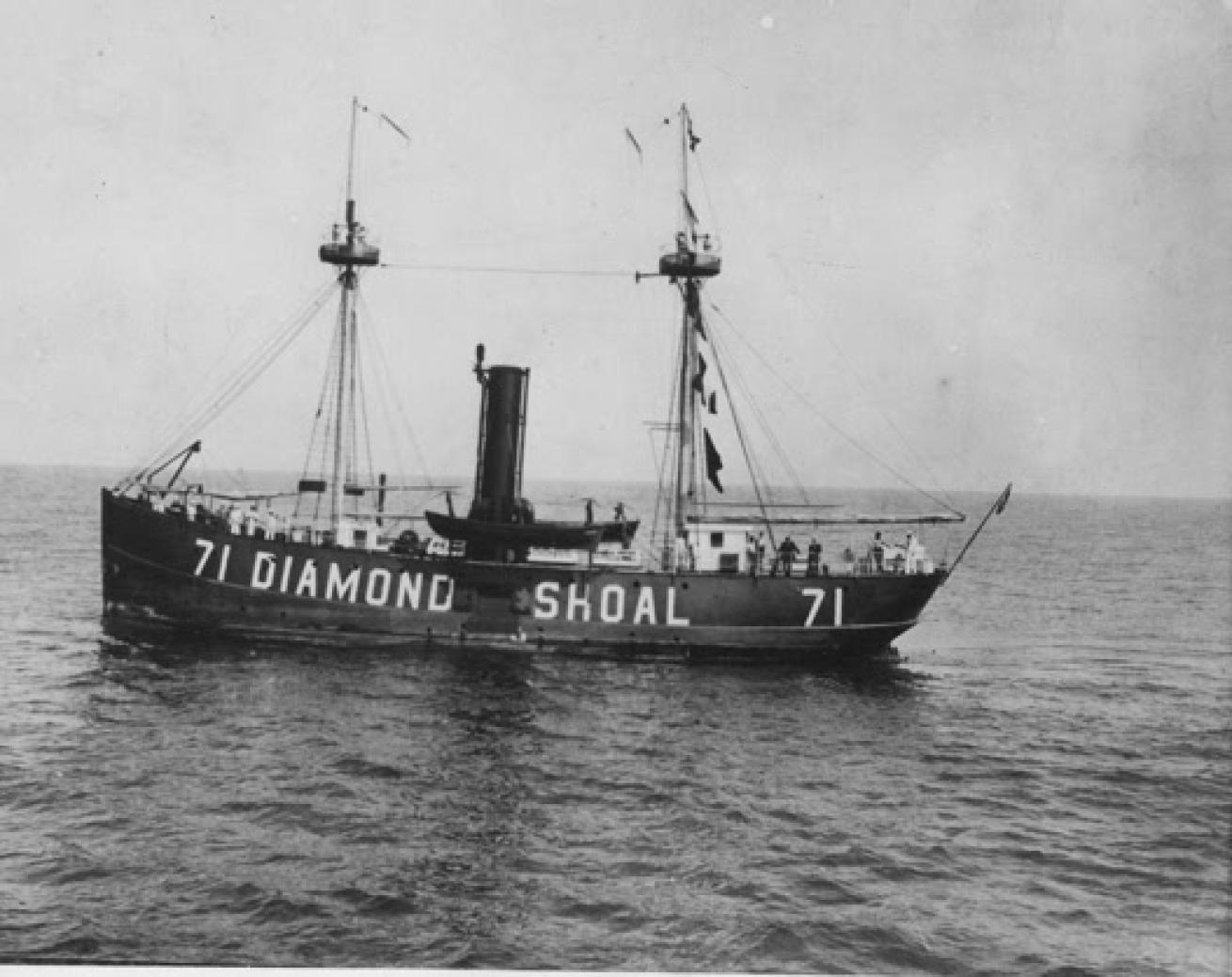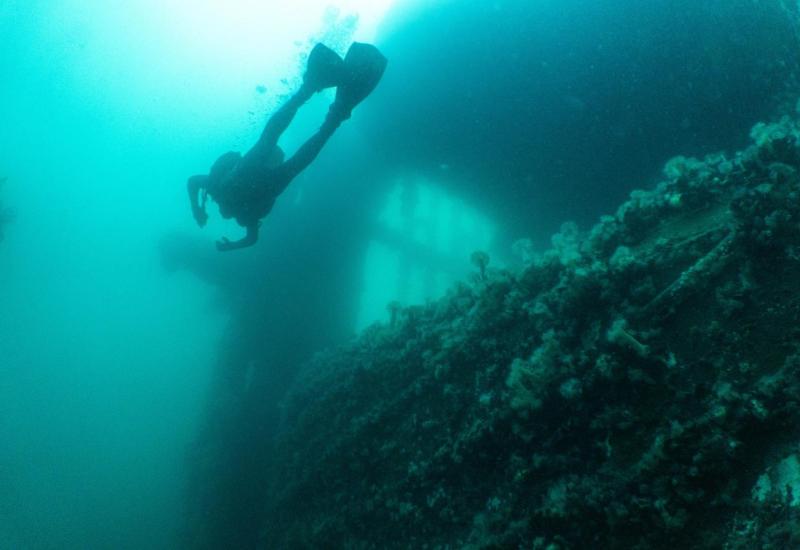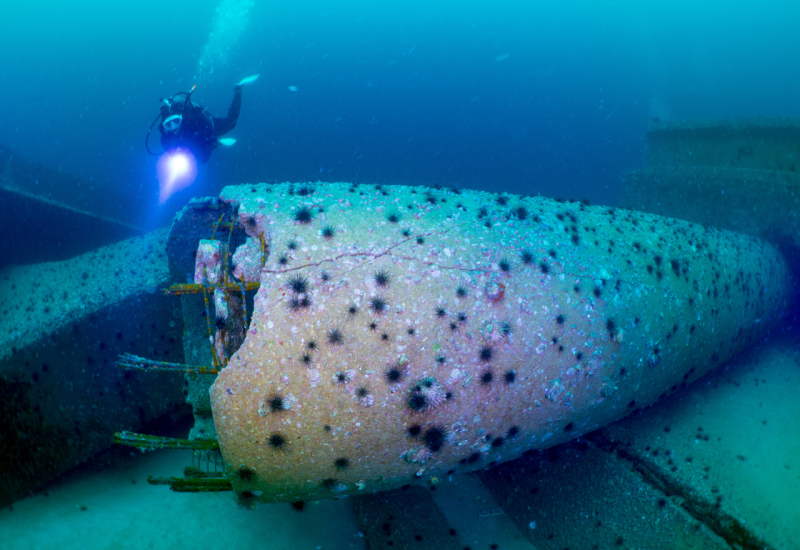NOAA and U.S. Coast Guard Partner to Protect WWI Wreck

Diamond Shoal Lightship
The Diamond Shoal Lightship sank in 1918 after it was attacked by a German U-boat during WWI.
Courtesy NOAA
The National Oceanic and Atmospheric Administration has teamed up with the U.S. Coast Guard to preserve a historic World War I shipwreck, the _Diamond Shoal Lightship No. 71, _according to a release from NOAA.
The vessel sunk off the coast of North Carolina on Aug. 6, 1918, after it was attacked by the German submarine U-140 while anchored off Cape Hatteras. The Diamond Shoal is the only lightship sunk by enemy action during WWI.
The lightship was able to report the presence of the U-boat — which had torpedoed the unarmed American steamer Merak — via radio, warning 25 friendly vessels away from danger. The U-140 eventually intercepted the warning and downed the Diamond Shoal — but not before allowing the lightship's crew to abandon ship.
“Maritime heritage's powerful stories connect people to the sea,” said Daniel J. Basta, director of NOAA’s Office of National Marine Sanctuaries. “The story of the heroic crew of the lightship is reflected by its sunken remains, and through them, our two agencies connect to share this special monument in the sea with all Americans.”
Prior to the attack, the lightship — which was built in Bath, Maine, in 1987 — served as a floating lighthouse and sound signal station, and ensured the safe navigation of nearby vessels.
NOAA and the Coast Guard signed a formal agreement to manage the historic wreck in September; however, the vessel will remain under the United State’s ownership. As part of the agreement, NOAA will document the wreck’s physical remains, nominate the site to the National Register of Historic Places and team up with the surrounding community and Coast Guard to share the Diamond Shoal’s history.
The lightship sits at 180 feet, putting it in reach of advanced technical divers.
“To help recreational divers better interpret the wreck site, NOAA will create illustrated dive slates and an online exhibit about the wreck and its crew,” the release states.

Courtesy NOAAThe Diamond Shoal Lightship sank in 1918 after it was attacked by a German U-boat during WWI.
The National Oceanic and Atmospheric Administration has teamed up with the U.S. Coast Guard to preserve a historic World War I shipwreck, the _Diamond Shoal Lightship No. 71, _according to a release from NOAA.
The vessel sunk off the coast of North Carolina on Aug. 6, 1918, after it was attacked by the German submarine U-140 while anchored off Cape Hatteras. The Diamond Shoal is the only lightship sunk by enemy action during WWI.
The lightship was able to report the presence of the U-boat — which had torpedoed the unarmed American steamer Merak — via radio, warning 25 friendly vessels away from danger. The U-140 eventually intercepted the warning and downed the Diamond Shoal — but not before allowing the lightship's crew to abandon ship.
“Maritime heritage's powerful stories connect people to the sea,” said Daniel J. Basta, director of NOAA’s Office of National Marine Sanctuaries. “The story of the heroic crew of the lightship is reflected by its sunken remains, and through them, our two agencies connect to share this special monument in the sea with all Americans.”
Prior to the attack, the lightship — which was built in Bath, Maine, in 1987 — served as a floating lighthouse and sound signal station, and ensured the safe navigation of nearby vessels.
NOAA and the Coast Guard signed a formal agreement to manage the historic wreck in September; however, the vessel will remain under the United State’s ownership. As part of the agreement, NOAA will document the wreck’s physical remains, nominate the site to the National Register of Historic Places and team up with the surrounding community and Coast Guard to share the Diamond Shoal’s history.
The lightship sits at 180 feet, putting it in reach of advanced technical divers.
“To help recreational divers better interpret the wreck site, NOAA will create illustrated dive slates and an online exhibit about the wreck and its crew,” the release states.










